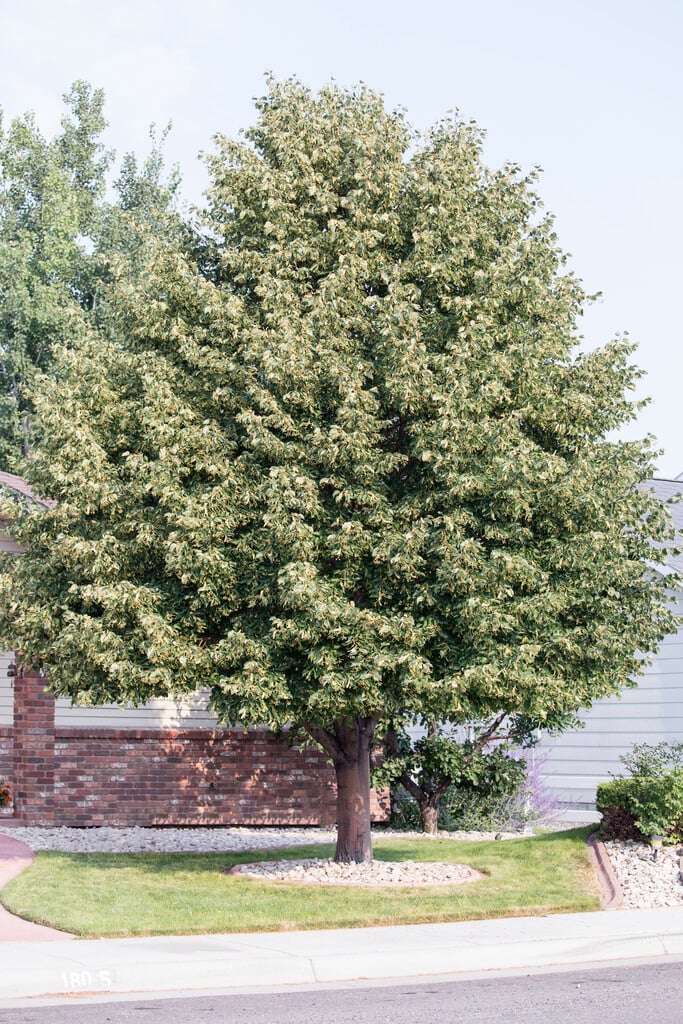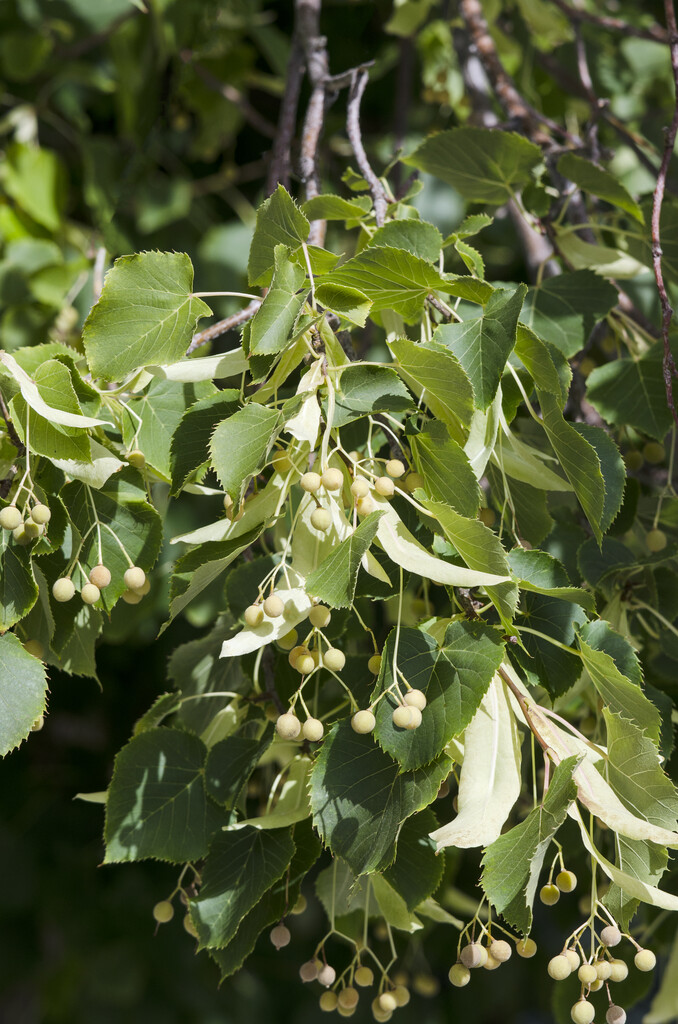Tilia americana
American lime
A broadly conical decidous tree about 20-30m tall, the young bark smooth and grey, rough and corky when mature, with a domed crown and spreading branches bearing very large, broad dark green leaves to 30cm long, turning yellow-green in autumn. Fragrant pale yellow flowers in clusters of up to 20 flowers are borne in early summer
Size
Ultimate height
Higher than 12 metresTime to ultimate height
20–50 yearsUltimate spread
Wider than 8 metresGrowing conditions
Moisture
Moist but well–drainedpH
Acid, Alkaline, NeutralColour & scent
| Stem | Flower | Foliage | Fruit | |
| Spring | Green | |||
|---|---|---|---|---|
| Summer | Yellow | Green | ||
| Autumn | Yellow Green | |||
| Winter |
Position
- Full sun
- Partial shade
Aspect
East–facing or South–facing or West–facing
Exposure
Sheltered Hardiness
H6Botanical details
- Family
- Malvaceae
- Native to GB / Ireland
- No
- Foliage
- Deciduous
- Habit
- Spreading branched
- Genus
Tilia are deciduous trees with broadly ovate or heart-shaped leaves and pendulous clusters of fragrant yellow-green flowers, followed by conspicuous winged fruits
- Name status
Correct
How to grow
Cultivation
Suitable for parks and very large gardens. Grow in moist but well-drained soil in full sun or part shade, with shelter from cold winds. For more advice see tree cultivation
Propagation
Propagate by seed, stratified in containers outdoors in spring. See propagate from seed (tree/shrub) Propagate by chip budding although care must be taken with the choice of rootstock
Suggested planting locations and garden types
- Architectural
- Wildlife gardens
Pruning
Pests
May be susceptible to aphids, horse chestnut scale, caterpillars, sawflies and gall mites
Diseases
May be susceptible to sooty mould, Phytophthora root rot and honey fungus
Love gardening
Sign up to receive regular gardening tips, inspiration, offers and more
View our Privacy Policy
Get involved
The Royal Horticultural Society is the UK’s leading gardening charity. We aim to enrich everyone’s life through plants, and make the UK a greener and more beautiful place.

